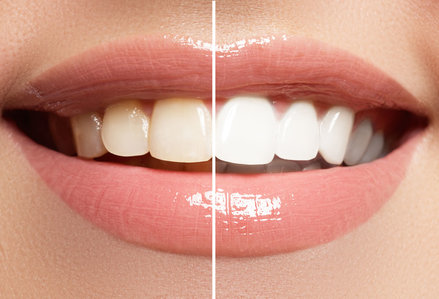When you visit us at Dental Care of Plano for a regular check-up, you will receive a professional tooth cleaning. This process removes excess plaque build-up and helps us monitor the health of your gums and teeth. However, a deep cleaning is a separate process that we recommended for patients who have been diagnosed with gum disease. Deep cleaning is also called periodontal therapy or root planing because it specifically relates to the health of the gums.
What is the Deep Cleaning Difference?
A professional teeth cleaning includes a thorough clean of the enamel of the tooth, a good floss, and usually a pocket test which means that the place where the gum and the teeth connect will be measured. This process removes excess plaque, calculus, and debris that is at or above the gum line. This process feels like brushing your teeth very well. It is short, painless, and possibly even enjoyable.
With a deep cleaning, or periodontal therapy, treatment, you will first be numbed with a local anesthetic, to prevent any pain associated with sore or infected gums. Then the dentist will remove plaque buildup, calculus, and any other debris that has collected underneath the gum line. The dentist will sometimes smooth and shape the exposed root of the tooth during a deep cleaning, to help prevent bacteria from getting into the root.
Finally, at the end of a deep cleaning, an antibiotic is often prescribed, to heal any bacterial infection that was present, and to prevent the formation of new bacteria while your gums and teeth reconnect.
How Long Does It Take?
Most dentists will perform the deep cleaning on the entire mouth in a single visit. How long this visit takes varies depending on the state of your teeth and gums. Recovery is typically a fast process. A patient only has to take the antibiotics as directed, and possibly an over-the-counter pain reliever if necessary. Follow the aftercare instructions given to you here in our office, which will tell you when you can resume regular oral health care.
Maintenance Required
Gum disease can become something very serious if not treated. However, when treated, it can be cured for good. There are some patients, however, who are never 100% cured from gum disease. These patients must come in to the dentist regularly to maintain the cleanliness below the gum line. This helps prevent root canals, lost teeth, and bigger healthcare problems like strokes and heart disease.
We would typically recommend a person with gum disease to come in once a quarter to monitor the status of the gums and receive a deep cleaning, or periodontal therapy, when necessary. This may eventually slow down to a six-month schedule.
Contact Dental Care of Plano to Learn More
How do you know if you have gum disease and need a deep cleaning? For most patients, gums become red, swollen, bleeding, and detached from the tooth, if a disease is present. If you are experiencing any of those symptoms,contactour office today to learn more about periodontal therapy.



